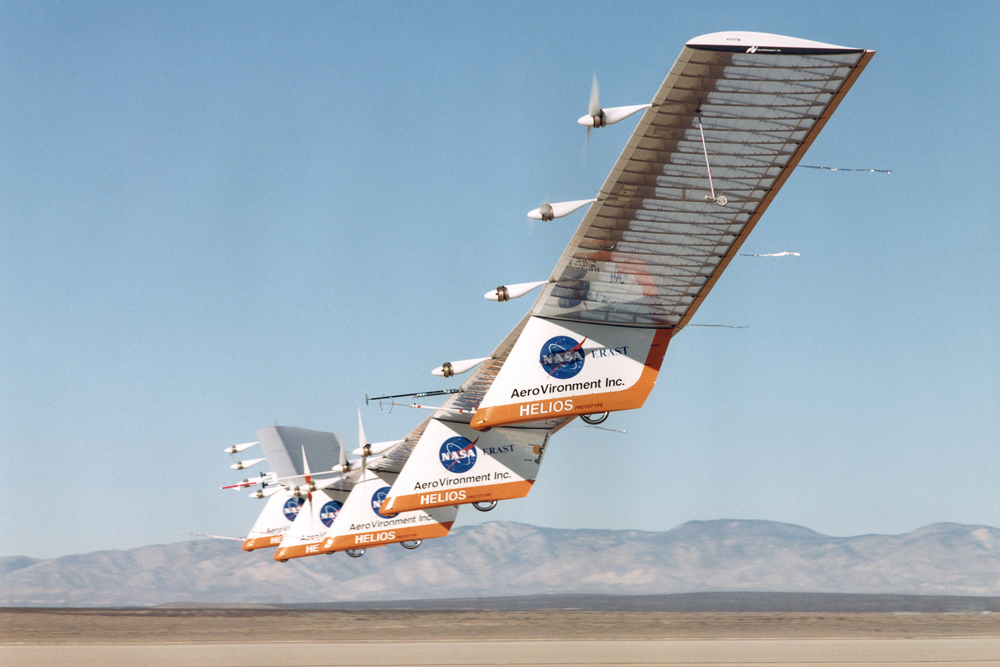Space History Photo: Huge Helios Prototype Spreads Its Wings

In this historical photo from the U.S. space agency, the Helios Prototype is an enlarged version of the Centurion flying wing, which flew a series of test flights at Dryden in late 1998. The craft, pictured Nov. 1, 1999, has a wingspan of 247 feet — longer than either the Boeing 747 jetliner or Lockheed C-5 transport aircraft.
The Helios Prototype is one of several remotely piloted aircraft — also known as uninhabited aerial vehicles, or UAV's — being developed as technology demonstrators by several small airframe manufacturers under NASA's Environmental Research Aircraft and Sensor Technology (ERAST) project.
Developed by AeroVironment, Inc., of Monrovia, Calif., the unique craft is intended to demonstrate two key missions: the ability to reach and sustain horizontal flight at 100,000 feet altitude on a single-day flight, and to maintain flight above 50,000 feet altitude for at least four days, both on electrical power derived from non-polluting solar energy.
During later flights, AeroVironment's flight test team will evaluate new motor-control software which may allow the pitch of the aircraft (the nose-up or nose-down attitude in relation to the horizon) to be controlled entirely by the motors. If successful, production versions of the Helios could eliminate the elevators on the wing's trailing edge now used for pitch control, saving weight and increasing the area of the wing available for installation of solar cells.
Each weekday, SPACE.com looks back at the history of spaceflight through photos (archive).
Get the Space.com Newsletter
Breaking space news, the latest updates on rocket launches, skywatching events and more!
Join our Space Forums to keep talking space on the latest missions, night sky and more! And if you have a news tip, correction or comment, let us know at: community@space.com.

The National Aeronautics and Space Administration (NASA) is the U.S. government agency in charge of the civilian space program as well as aeronautics and aerospace research. Founded in 1958, NASA is a civilian space agency aimed at exploring the universe with space telescopes, satellites, robotic spacecraft, astronauts and more. The space agency has 10 major centers based across the U.S. and launches robotic and crewed missions from the Kennedy Space Center in Cape Canaveral Florida. It's astronaut corps is based at the Johnson Space Center in Houston. To follow NASA's latest mission, follow the space agency on Twitter or any other social channel, of visit: nasa.gov.
